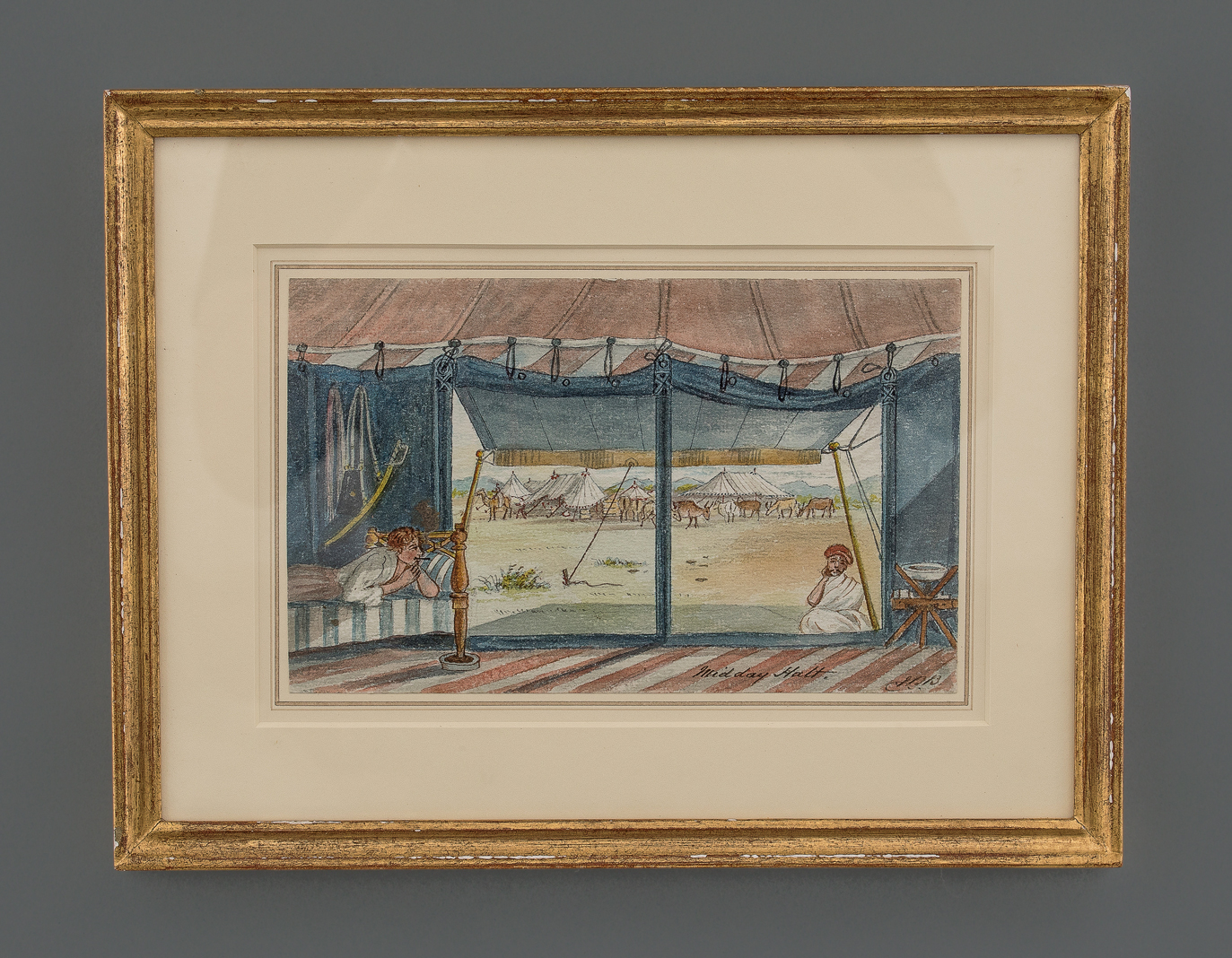
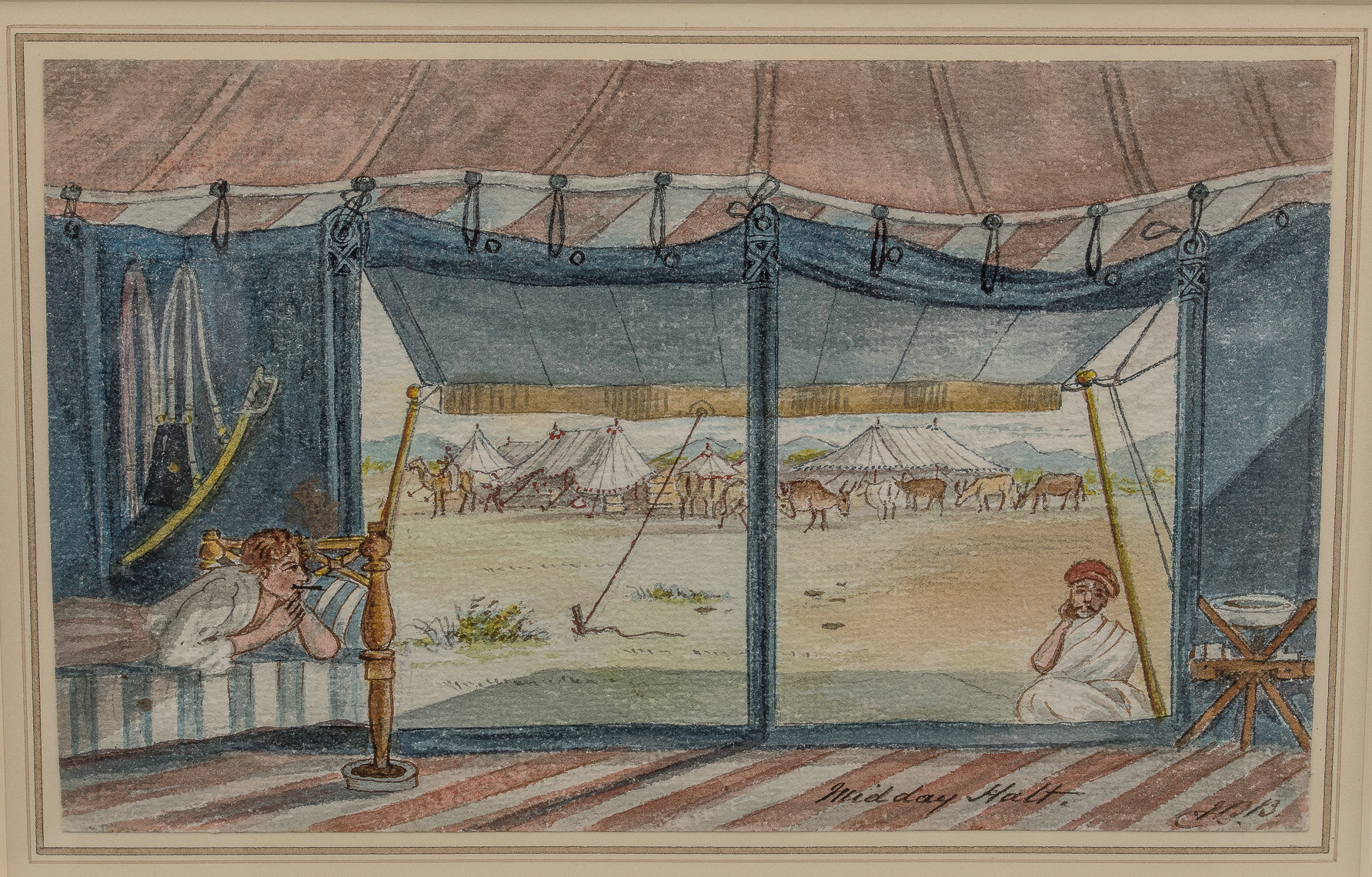
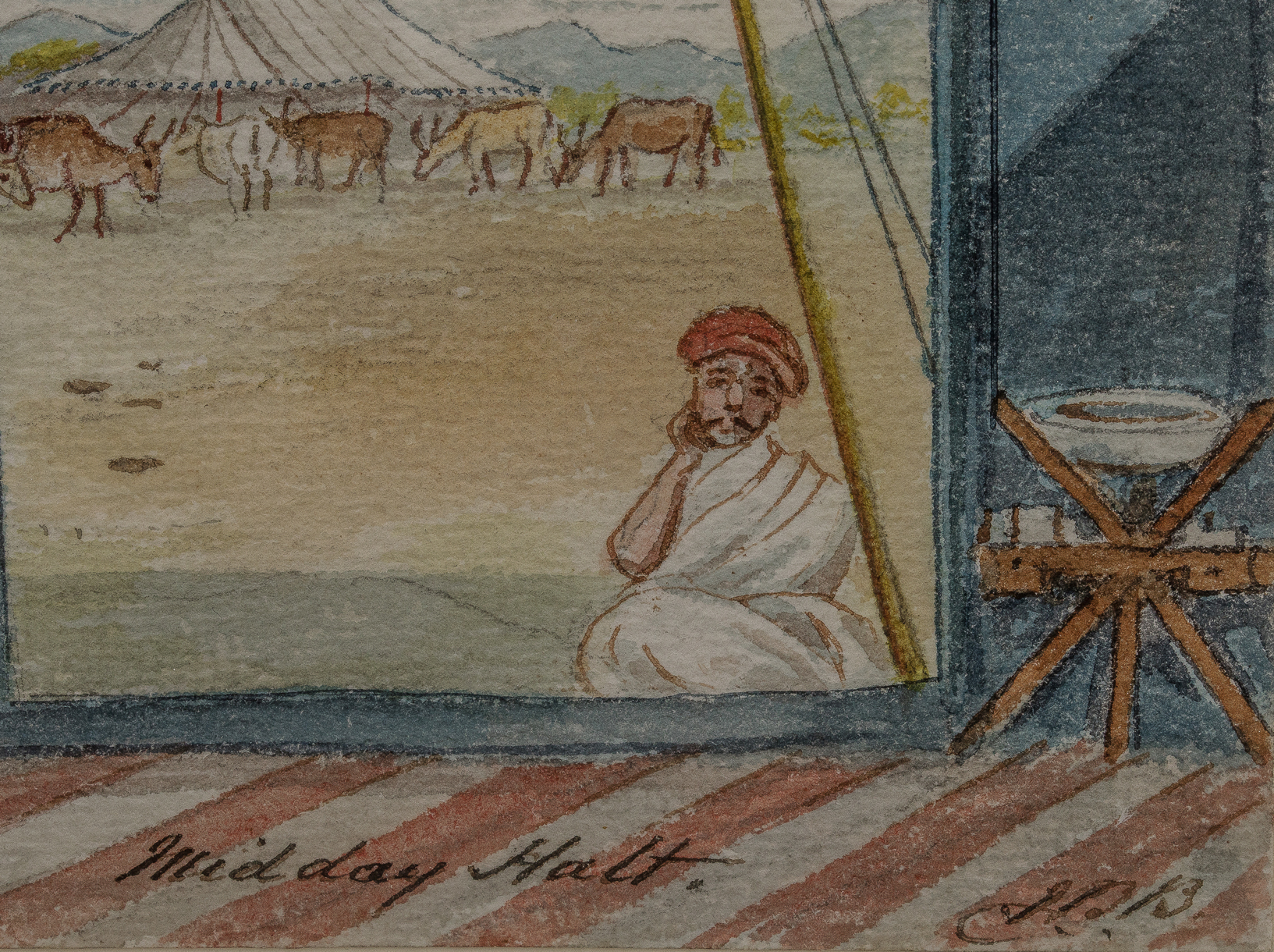
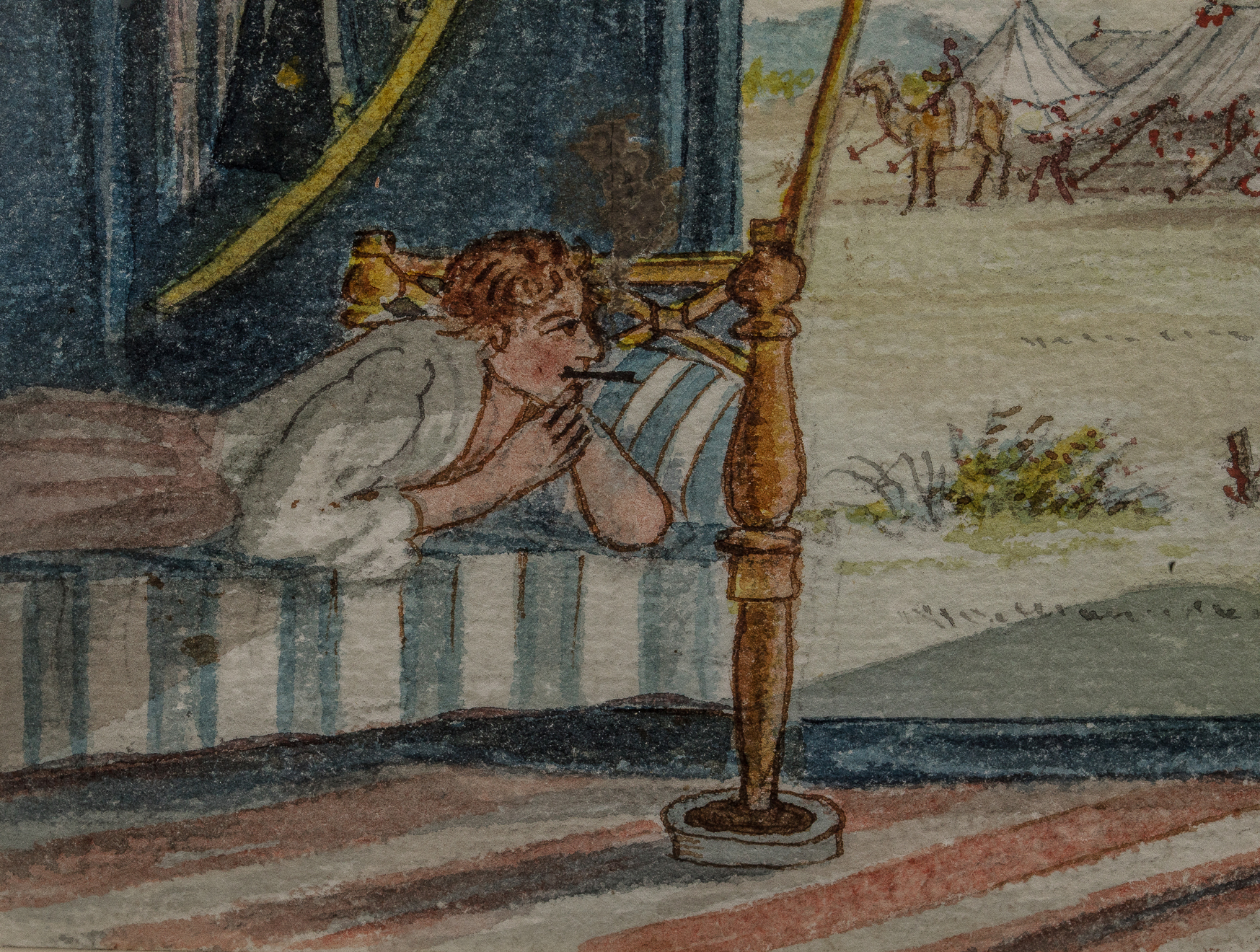
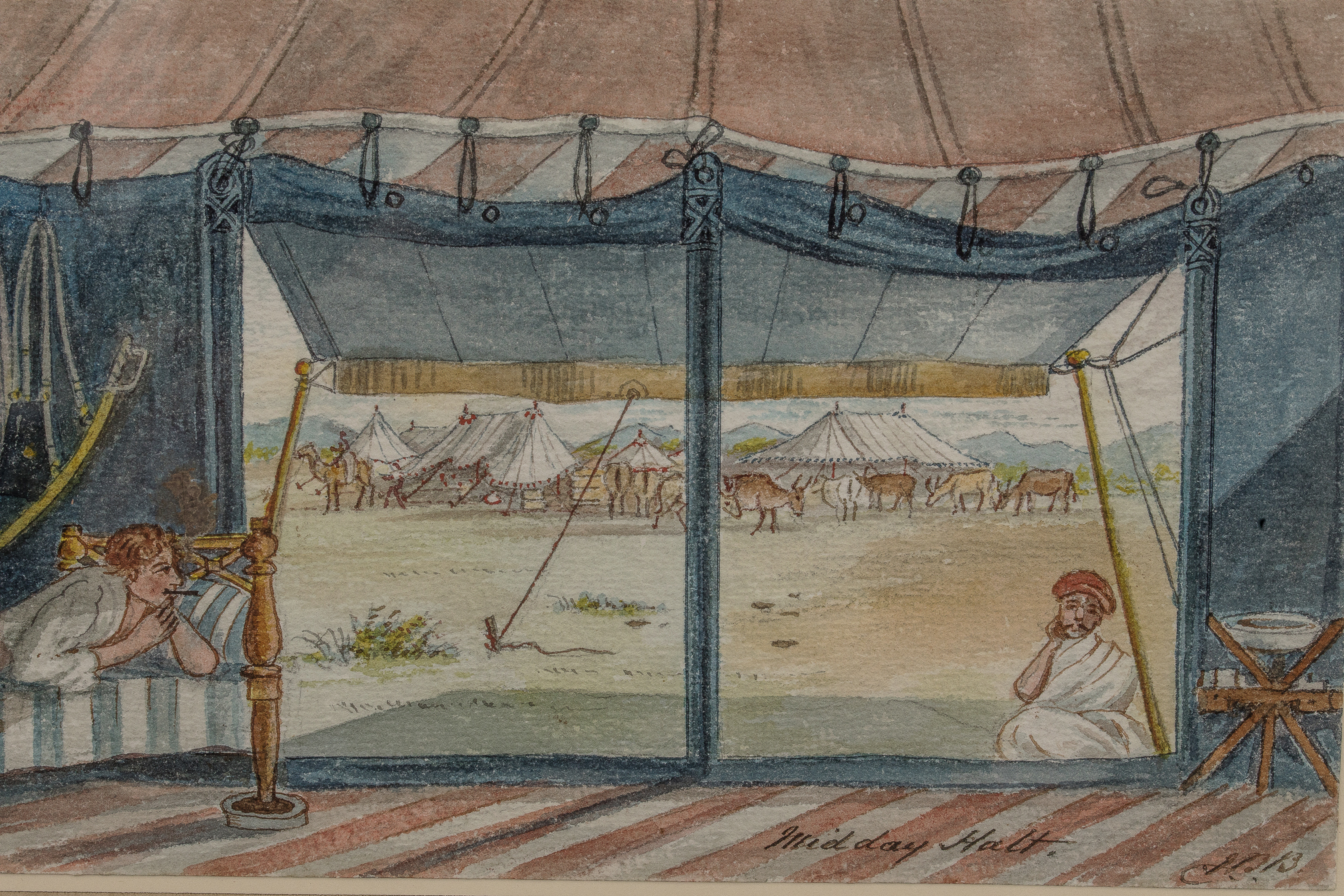
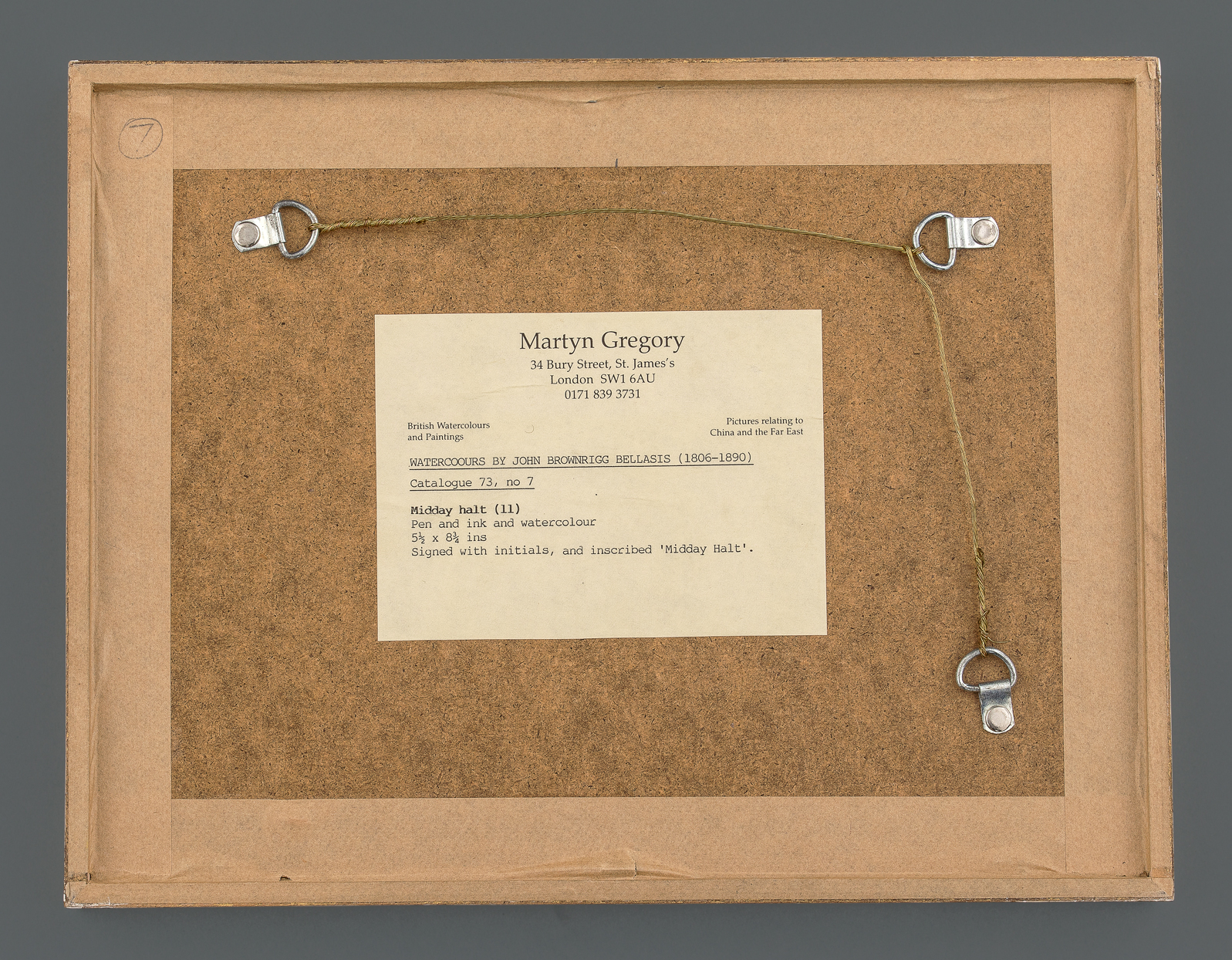
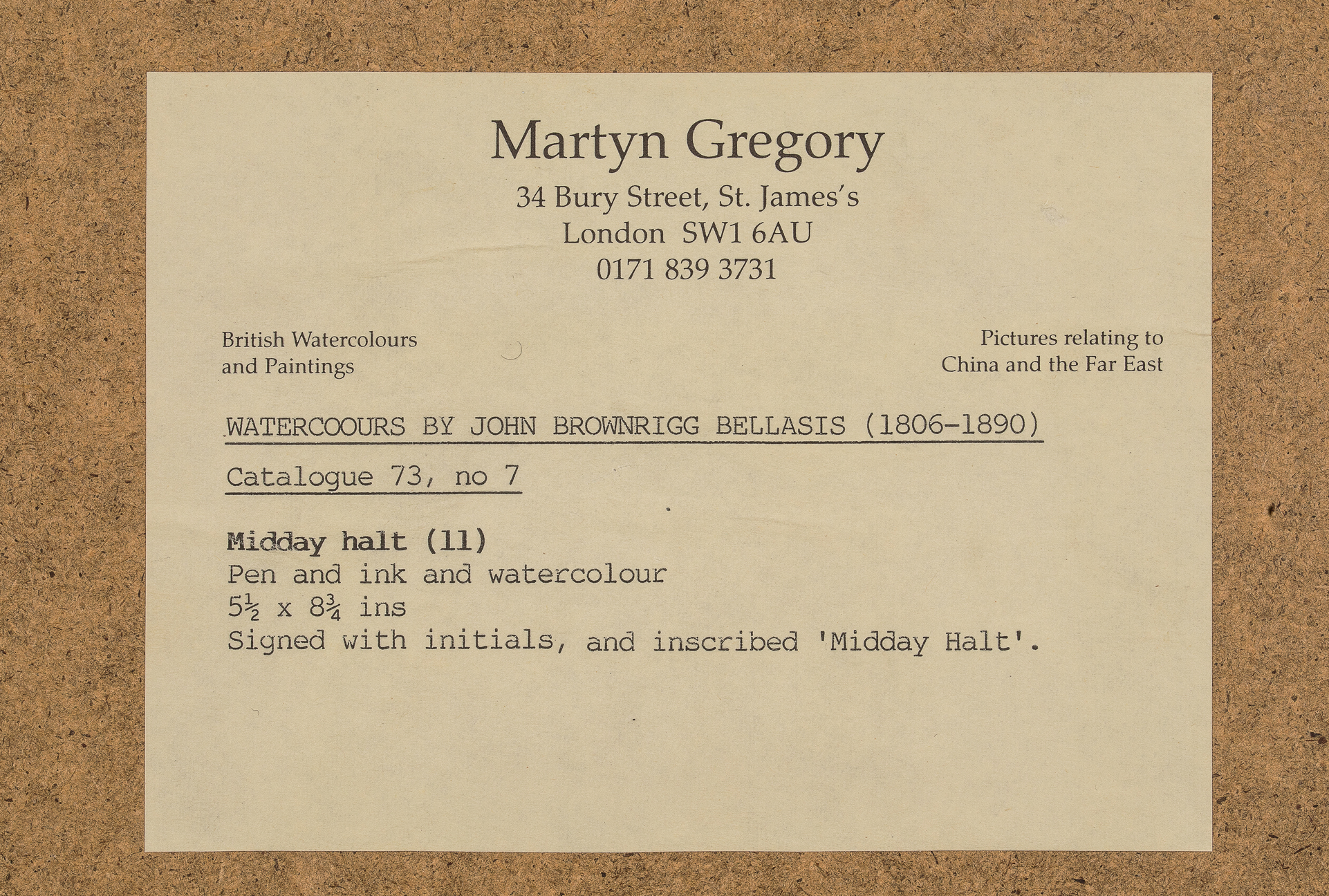
John Brownrigg Bellasis
English, 1806-90
MIDDAY HALT
Pen, Ink and Watercolor
Signed with initials “JJB” and titled “MIDDAY HALT”
c. 1825
Image 5 1/2 ins high 8 3/4 ins wide
Framed 10 1/4 ins high 13 1/4 ins wide
For questions regarding viewing, shipping, and anything else,
contact us at: [email protected]
This watercolor was painted by a young East India Company employee on secondment to India. The quality of the painting is very fine and raises it above the usual amateur depictions by travelers to the colonies. It is also distinguished by its impressive publication, provenance and exhibition history.
“MIDDAY HALT” is the companion piece to “MIDDAY HALT – MARCHING” illustrated in color in Nicholas Brawer’s seminal book British Campaign Furniture, Elegance under Canvas 1740-1914.
The image depicts a young English gentleman, clearly the artist himself, lounging on a daybed within a tent, attended by a native servant with tents, pack animals and cattle in the distance. These amateur works were sent back to the families and loved ones of those in India, whose term of duty was at least ten years, to record the often exotic nature of their new lives. As such they provide an invaluable record of the furniture, accoutrements and living conditions of the people of the time.
Works that come on the market by amateurs depicting travel are often anonymous so it is rare to find a piece that can be dated so precisely and can relate to the actual experiences of the protagonist.
Provenance:
Bellasis family, Westmorland, England, 19th century
With Martin Gregory Gallery, St. James’s, London, prior to 2002
With Nicholas Brawer, by 2002
Acquired by Howard Boote, Baltimore, Maryland, 2003
Exhibited: Britain’s Portable Empire: Campaign Furniture of the Georgian, Victorian and Edwardian Periods, Katonah Museum of Art, Katonah, New York, July 8 – September 30, 2001, curated by Nicholas Brawer.
Publication: The companion piece, “Midday-Halt-Marching” illustrated in color in Brawer, British Campaign Furniture.
Anglo-India, c. 1825
—
JOHN BROWNRIGG BELLASIS (1806-90)
The eldest of the six children of George and Charlotte Bellasis was John Brownrigg, who was born at Bowness in August, 1806. Details of his early life are recorded in a manuscript journal of which a copy is held in the Oriental Department of the British Library. By way of preparation for his career in the East, John Brownrigg Bellasis attended Mr. Woods’s naval academy at Whitehaven, where he received “a thorough course of Fortifications, French, Swimming and Surveying.” This earned him a cadetship in the East India Company. In London he was “drilled at Bird Cage Walk, Hyde Park, and had lessons in Equitation, Hindustani, Persian, and also Flute and Double Flageolet,” with twice-weekly lessons in eastern languages from Dr. Gilchrist of Duke Street, Piccadilly. After nine months’ hard study he was examined by the Board at India House, and —at the age of fifteen— passed fit for duty.
On March 3rd, 1822 he laid in a stock of lemons and joined the ship Euphrates at Gravesend, bound for Bombay. At Madeira the Euphrates caught up with the Jupiter, with Lord Amherst aboard, on his way to take up the post of Governor-General; the Jupiter was “taking on wines for his Lordship’s use in India.” After the Cape the weather deteriorated; on May 31st, “painting in the cuddy, a large sea broke over the ship and set us all floating below.” A bundle of dried fish, insecurely tied to the mast, narrowly missed Cadet Bellasis as it fell; and as lightning struck the ship, “three balls of fire sat on the mast heads at the same time.” When the storm abated, he encountered (as he claimed) “a large shark … hooked him twice but he got off.”
Arriving at Bombay on July 12th, he took a palanquin to Randal Lodge, the Bellasis house three miles outside the city. Whitin a fortnight he was at a ball at the Governor’s country house (which had been built by his Uncle, Edward Belays, known as ‘the Engineer’). As an Ensign with the 10th Regiment of Native Infantry his pay was 150 rupees a month (15 Pounds), which he declared was barely adequate; luckily he received 2,500 rupees from Uncle Edward, and a horse and trappings from Uncle Dan.
By 1825 he was well aware of the less glamorous aspects of an officer’s life. Although his proficiency as a linguist gained him work as interpreter in Hindustani and Marathi, advancement was slow (since promotion went by seniority), and he had ten years to serve before his first furlough. “An officer without a staff appointment is but indifferently off,” he wrote despondently on September 25th. He did gain such an appointment, but it was not until 1837, well into his second spell of service, when he was offered a post, at the rank of Captain, in the Revenue Survey at its headquarters near Sholapore. “So goodbye to parades and court-martials,” he wrote. “I am now a civilian and laid by red coast and sword for a large broad brimmed “Victoria Golgotha’ [hat] and fustian jacket to trot about the fields.”
But civilian life had its discomforts too. “This is my second hot season in Tents, with the thermometer seldom below 120 degrees [even] with grass Tatties well watered,” he wrote on April 4th, 1839. He suffered bouts of dysentery and rheumatism, and was anticipating retirement when his twenty years were up, or earlier if possible. In the following hear he secured a sick certificate on grounds of “heat apoplexy,” and wrote home to his mother on February 18th asking her to “have the fishing tackle in fine order.”
By April 9th, 1840 he was at Aden, where his brother George was stationed, and where he “laid in a stock of ostrich feathers and eggs, among other curios.” He sailed up the Red Sea, which steamers could now navigate against the wind; and from Suez he took the newly-fashionable “overland route” through Egypt. “Station houses” were set up along the route, for rest and refreshment, but Bellasis found the first one full, with “nothing to be had, but our cigars, and a sip of brackish water.” Once in Cairo, he put up at Waghorn’s Hotel, went to a bath-house, visited the Pyramids and “breakfasted in the mummy pits,” before taking ship from Alexandria to Naples via Malta, and thence home.
His homecoming was not permanent, however. In England he married Louisa Eames, daughter of an equerry to the late Duke of York, and she accompanied him on his return to India in 1842, although she was soon to be invalided home with their small children. As Major Bellasis he was appointed in 1844 to the command of the Gujarat Provincial Battalion. He took part in the siege of Sultan in 1848-9; and in 1856 he took command of the 9th Native Infantry Regiment, which remained loyal to the British during the Sepoy’s Revolt of 1857. The third member of the family in India to attain the rank of General, John Brownrigg finally retired in July 1858 at age fifty-two to Holly Hill in his native Westmorland where he spent his final thirty two years.
Biography compiled by Nicholas Brawer and used with with permission.